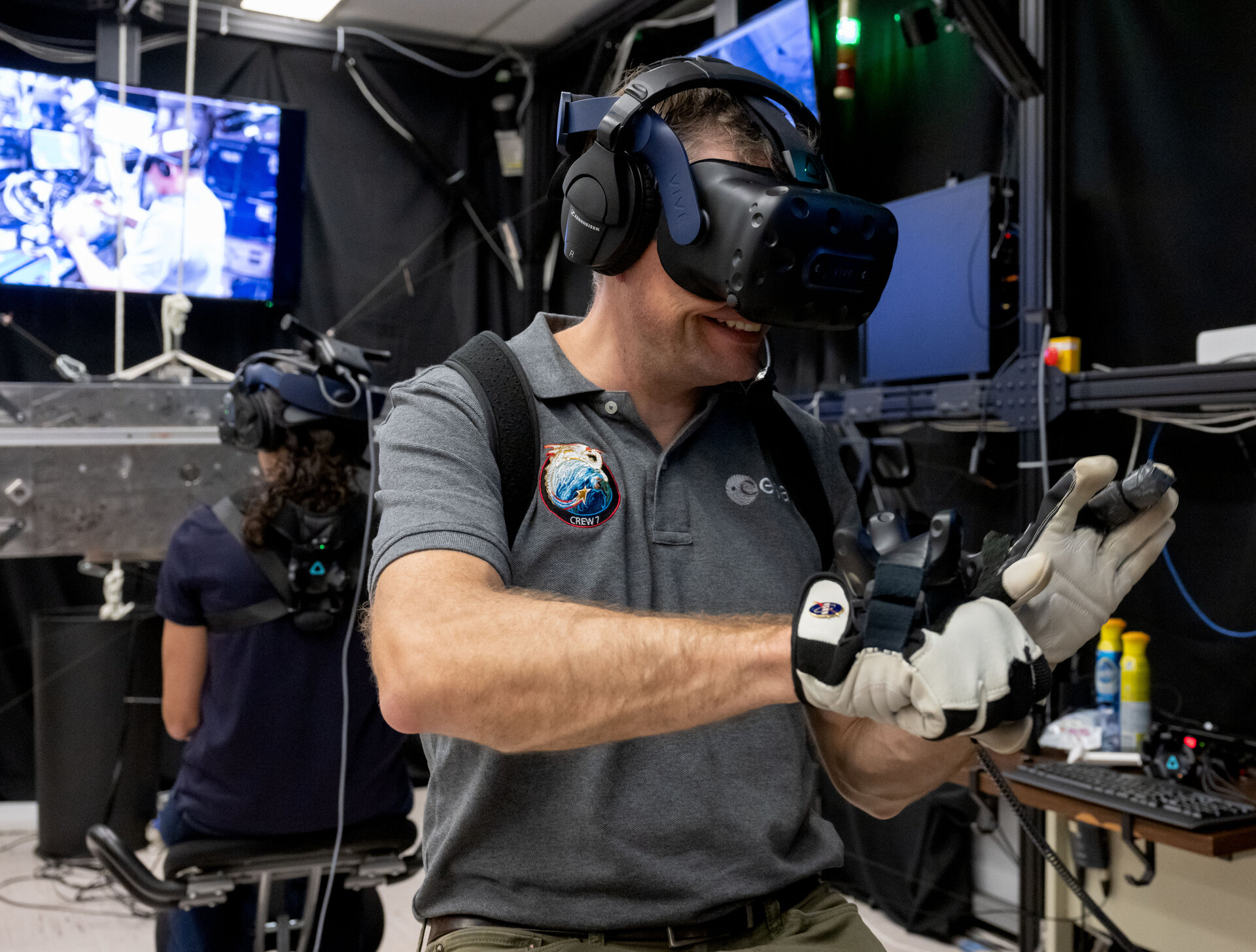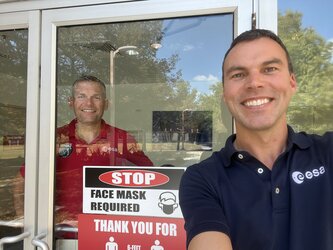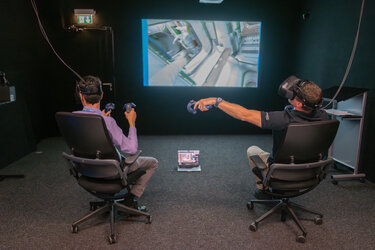Accept all cookies Accept only essential cookies See our Cookie Notice

About ESA
The European Space Agency (ESA) is Europe’s gateway to space. Its mission is to shape the development of Europe’s space capability and ensure that investment in space continues to deliver benefits to the citizens of Europe and the world.
Highlights
ESA - United space in Europe
This is ESA ESA facts Member States & Cooperating States Funding Director General Top management For Member State Delegations European vision European Space Policy ESA & EU Space Councils Responsibility & Sustainability Annual Report Calendar of meetings Corporate newsEstablishments & sites
ESA Headquarters ESA ESTEC ESA ESOC ESA ESRIN ESA EAC ESA ESAC Europe's Spaceport ESA ESEC ESA ECSAT Brussels Office Washington OfficeWorking with ESA
Business with ESA ESA Commercialisation Gateway Law at ESA Careers Cyber resilience at ESA IT at ESA Newsroom Partnerships Merchandising Licence Education Open Space Innovation Platform Integrity and Reporting Administrative Tribunal Health and SafetyMore about ESA
History ESA Historical Archives Exhibitions Publications Art & Culture ESA Merchandise Kids Diversity ESA Brand Centre ESA ChampionsLatest
Space in Member States
Find out more about space activities in our 23 Member States, and understand how ESA works together with their national agencies, institutions and organisations.
Science & Exploration
Exploring our Solar System and unlocking the secrets of the Universe
Go to topicAstronauts
Missions
Juice Euclid Webb Solar Orbiter BepiColombo Gaia ExoMars Cheops Exoplanet missions More missionsActivities
International Space Station Orion service module Gateway Concordia Caves & Pangaea BenefitsLatest
Space Safety
Protecting life and infrastructure on Earth and in orbit
Go to topicAsteroids
Asteroids and Planetary Defence Asteroid danger explained Flyeye telescope: asteroid detection Hera mission: asteroid deflection Near-Earth Object Coordination CentreSpace junk
About space debris Space debris by the numbers Space Environment Report In space refuelling, refurbishing and removingSafety from space
Clean Space ecodesign Zero Debris Technologies Space for Earth Supporting Sustainable DevelopmentLatest
Applications
Using space to benefit citizens and meet future challenges on Earth
Go to topicObserving the Earth
Observing the Earth Future EO Copernicus Meteorology Space for our climate Satellite missionsCommercialisation
ESA Commercialisation Gateway Open Space Innovation Platform Business Incubation ESA Space SolutionsLatest
Enabling & Support
Making space accessible and developing the technologies for the future
Go to topicBuilding missions
Space Engineering and Technology Test centre Laboratories Concurrent Design Facility Preparing for the future Shaping the Future Discovery and Preparation Advanced Concepts TeamSpace transportation
Space Transportation Ariane Vega Space Rider Future space transportation Boost! Europe's Spaceport Launches from Europe's Spaceport from 2012
Better SAFER than sorry
Thank you for liking
You have already liked this page, you can only like it once!
Andreas Mogensen training at NASA Johnson Space Center’s Virtual Reality Laboratory in Texas, USA.
Training for emergencies is crucial everywhere, including on the International Space Station. While astronauts hope they will never have to need those skills, they still need to practice so they are ready should the situation ever arise.
VR to the rescue
As part of ESA astronaut Andreas Mogensen’s training for his Huginn mission, he put on virtual reality goggles and “went” outside the Space Station to train for spacewalk emergencies.
When astronauts perform a spacewalk, they go into their spacesuit, climb out the airlock and always stay tethered to the Space Station with a cable. If ever they were to be disconnected however, their spacesuit, or Extravehicular Mobility Unit (EMU), has a ‘Simplified Aid For EVA Rescue’ (SAFER) system which is a small jet-pack to push them back to the Space Station. It uses 24 small nitrogen-gas thrusters, controlled by a small hand controller on the front of the space suit.
Almost like the real deal
The virtual reality system uses several trackers to allow accurate tracking of the astronaut’s hands and body as they train, while the system uses real hardware that is projected in the virtual training scenario., ensuring every move the astronaut makes is passed into the simulator, making the experience as realistic as possible.
To qualify, the astronauts must get back after being “thrown” off the Space Station at 1 kilometre per hour and rotating in a slow spin in each axis. Usually, each astronaut trains each orientation multiple times before being required to pass with a final certifying test.
Andreas passed his SAFER training with crewmate Jasmin Moghbeli.
Follow Andreas’s journey on the Huginn page and his social media
-
CREDIT
NASA -
LICENCE
ESA Standard Licence

Andreas Mogensen in EVA training for Huginn

Andreas Mogensen receiving training for his Huginn mission

Training for Huginn

Andreas Mogensen in quarantine for Huginn launch















 Germany
Germany
 Austria
Austria
 Belgium
Belgium
 Denmark
Denmark
 Spain
Spain
 Estonia
Estonia
 Finland
Finland
 France
France
 Greece
Greece
 Hungary
Hungary
 Ireland
Ireland
 Italy
Italy
 Luxembourg
Luxembourg
 Norway
Norway
 The Netherlands
The Netherlands
 Poland
Poland
 Portugal
Portugal
 Czechia
Czechia
 Romania
Romania
 United Kingdom
United Kingdom
 Slovenia
Slovenia
 Sweden
Sweden
 Switzerland
Switzerland
























